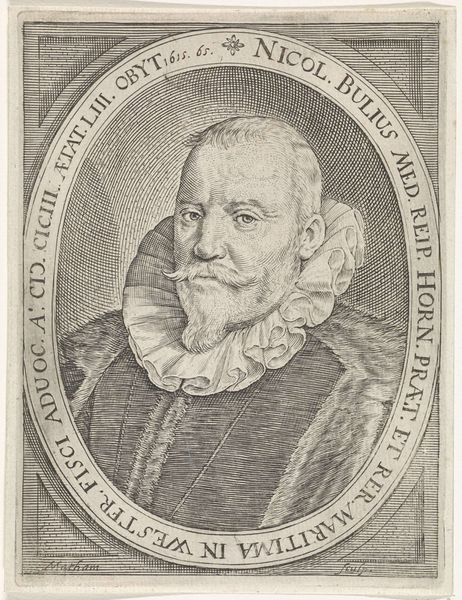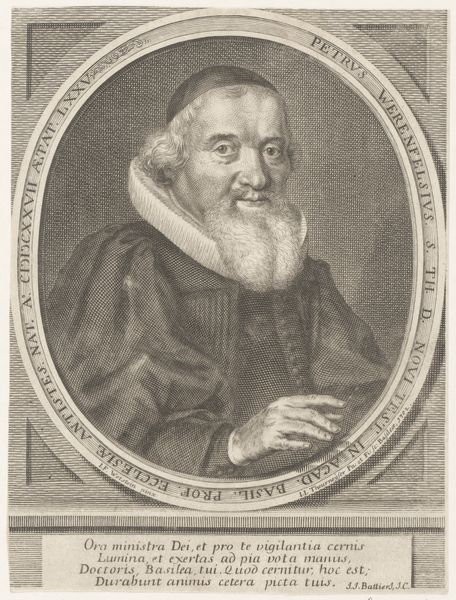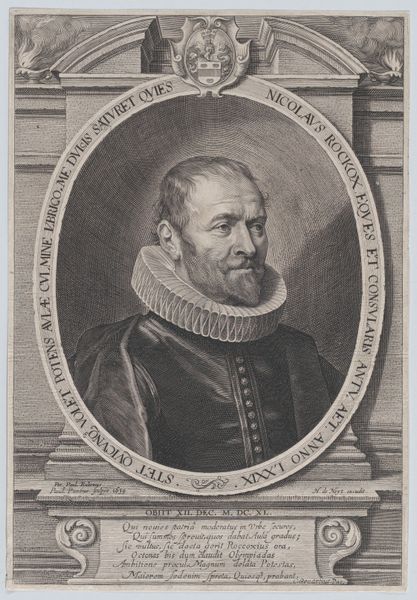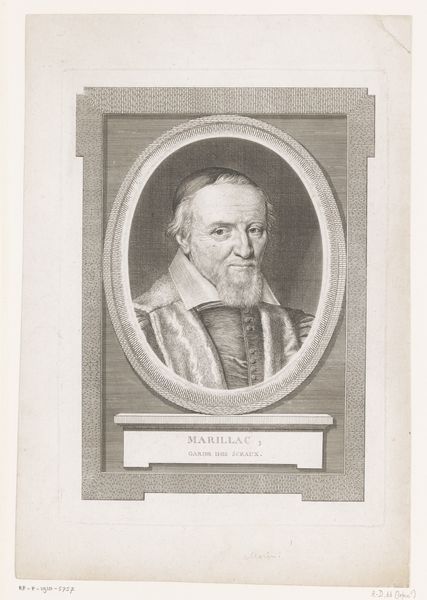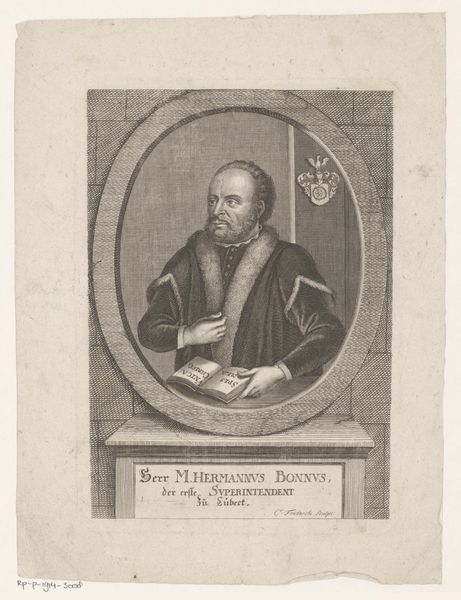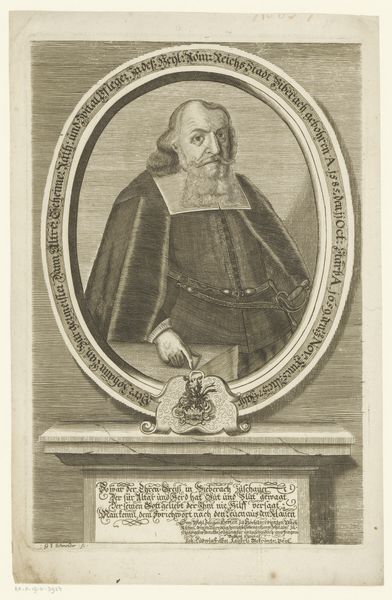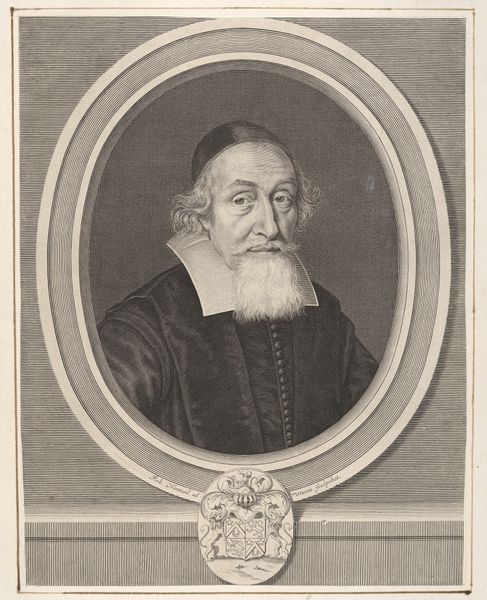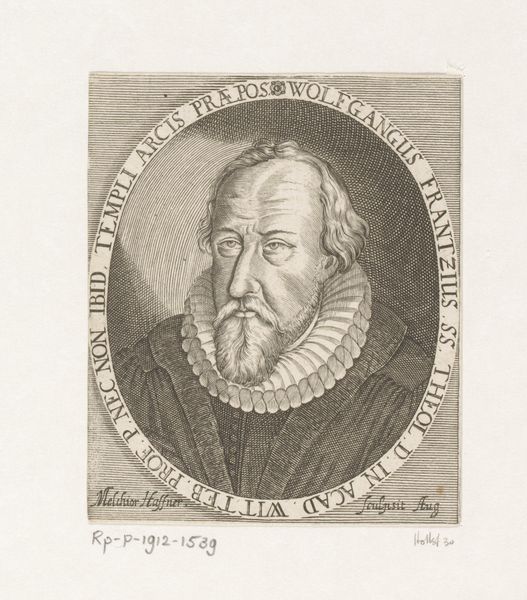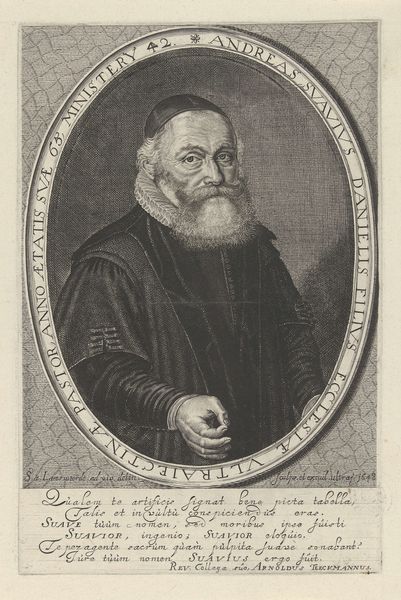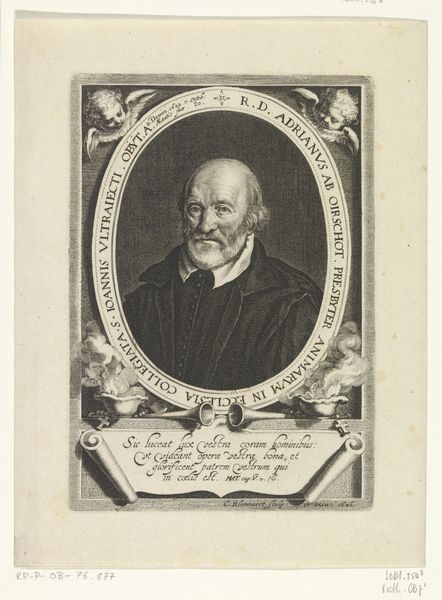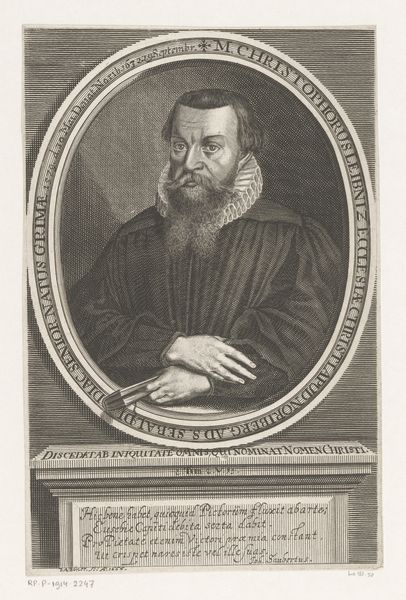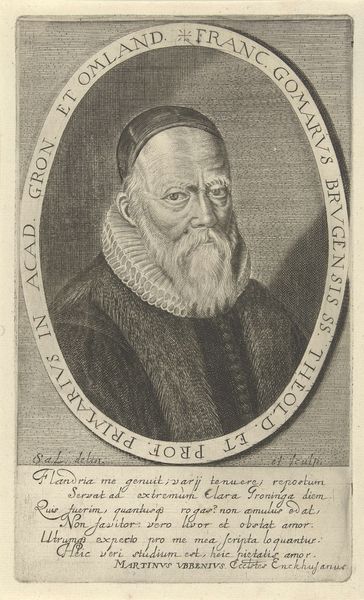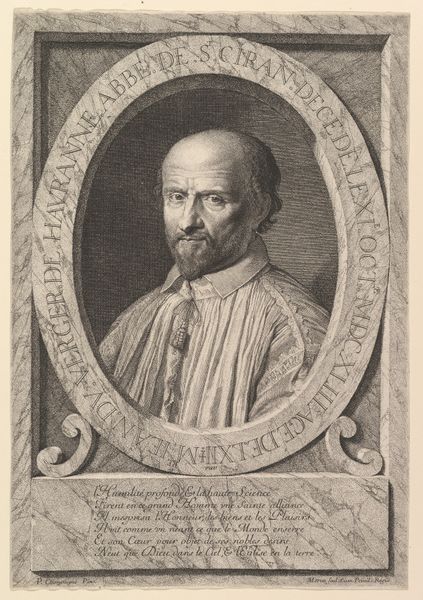
Michel de Marillac, conseiller d'etat et garde des sceaux 1600 - 1650
0:00
0:00
drawing, print, intaglio, engraving
#
portrait
#
drawing
#
baroque
# print
#
intaglio
#
men
#
engraving
Dimensions: image: 12 3/8 x 10 1/8 in. (31.5 x 25.7 cm)
Copyright: Public Domain
Editor: Here we have Jean Morin's engraving of "Michel de Marillac, conseiller d'état et garde des sceaux," dating sometime between 1600 and 1650. I’m immediately struck by how the subject, Michel de Marillac, seems framed, both literally and perhaps figuratively. What can you tell me about this portrait in the context of its time? Curator: That's an excellent observation. The framing is crucial, isn't it? Consider this engraving within the context of 17th-century France, a society deeply invested in displaying power and status. Marillac held significant public offices. Morin’s print was made for circulation. Its production was sponsored or controlled by royal power. How might that fact have influenced its content? Editor: It probably suggests the portrait had an intended role in shaping Marillac's public image… Curator: Precisely. Intaglio prints like this one became vital tools in constructing and disseminating carefully crafted personas. What does the choice of engraving as a medium contribute to this aim, versus, say, a painted portrait? Editor: It seems engraving would allow for wider distribution, thereby extending Marillac’s reach and influence… more people could access and recognize his authority. Curator: Exactly. Engravings facilitated a broader public engagement with figures of authority. The surrounding inscription solidifies the public declaration and reminder of his political influence. Did Marillac remain in a position of power? What happened to him? Editor: I understand he fell out of favor and was imprisoned later in life. I never considered the role printmaking played in solidifying someone’s public persona during this period. Curator: These prints allow us insight into a pivotal intersection of art, power, and the construction of public image in 17th-century France. It challenges our conventional assumptions about artistic expression and agency.
Comments
No comments
Be the first to comment and join the conversation on the ultimate creative platform.
